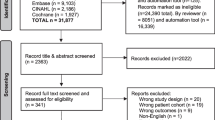Abstract
Introduction
The evolution of venous access via peripheral cannulation, particularly in relation to the risks and the benefits of this procedure, is reported widely in the literature. However, there is limited research specific to the patient experience of undergoing venous access.
Aim
The intent of this qualitative study was to understand patients’ experience of venous access, with the aim of bringing forth their voices about the experiences of repeated venous access/cannulation attempts.
Methodology
This qualitative study used a hermeneutic phenomenological approach to explore the experiences of 15 participants in two rural oncology units in Australia. The participants had experienced repeated peripheral cannulation in order to receive chemotherapy. Study participants were asked to describe what it was like for them to be repeatedly cannulated. Data were collected via audiotaped individual interviews, the participants’ stories were transcribed and analysed thematically.
Outcomes
Themes emerged from the participants’ stories that provided insights into their perceptions of the experience of being cannulated and the decision-making processes regarding how and where the procedure occurred. The findings suggest that a holistic approach to care was often missing causing the participants to feel vulnerable. Gaining insight into their experiences led to a greater understanding of the impact of this procedure on patients and the need to improve care through encouraging more collaborative decision-making processes between clinicians and patients.
Conclusion
The implications for policy and practice focus on improving patient outcomes via procedural governance and education, with the intent of translating the findings from this research into evidence-based practice.
Similar content being viewed by others
References
Donnelly F, Wiechula R (2006) The lived experience of a tracheostomy tube change: a phenomenological study. J Clin Nurs 15:1115–1122
Weiss Adams K, Tolich D (2011) Blood transfusion: the patient’s experience. Am J Nurs 111(9):24–30
Williams AM, Irurita VF (2004) Therapeutic and non-therapeutic interpersonal interactions: the patient’s perspective. J Clin Nurs 13(7):806–815
Sellman D (2005) Towards an understanding of nursing as a response to human vulnerability. Nurs Philos 6:2–10
Erlen JA (2006) Who speaks for the vulnerable? Orthop Nurs 25(2):133–136
Leung D, Esplen MJ (2010) Alleviating existential distress of cancer patients: can relational ethics guide clinicians? Eur J Cancer 19:30–38
Millam D (1996) The history of intravenous therapy. J Intraven Ther 19(1):5–14
Wilson J (2006) Preventing infection associated with intravascular therapy. In infection control in clinical practice, 3rd edn. Baillière Tindall, London
Webster J, Lloyd S, Hopkins T, Osborne S, Yaxley M (2007) Developing a research base for intravenous peripheral cannula re-sites (DRIP trial). A randomised controlled trial of hospital in-patients. Int J Nurs Stud 44(5):664–671
Van Manen M (1997) Researching lived experience 2nd edn. The Althouse, Ontario
Creswell JW (2007) Qualitative inquiry and research design: choosing among five approaches, 2nd edn. Sage Publications, Thousand Oaks
Husserl E (1970) The crisis of European sciences and transcendental phenomenology. David Carr, trans. Northwestern University Press, USA, Original work published 1954
Giorgi A (1997) The theory, practice, and evaluation of the phenomenological method as a qualitative research procedure. J Phenomenol Psychol 28(2):235–261
Merleau-Ponty M (1962) Phenomenology. Humanities Press, London
Australian Council for Safety and Quality in Health Care (2003) National strategy to address health care associated infection. Retrieved 28 May 2008 from http://www.safetyandquality.gov.au
Denzin NK, Lincoln YS (eds) (2008) The landscape of qualitative research. Sage Publications, Thousand Oaks
Lincoln YS, Guba EG (2000) Paradigmatic controversies, contradictions, and emerging confluences. In: Denzin NK, Lincoln YS (eds) Handbook of qualitative research, 2nd edn. Sage Publications, Thousand Oaks
Cherny NI (2012) Controversies in oncologist-patient communication: a nuanced approach to autonomy, culture and paternalism. Oncology 26:37–46
Mazor KM, Roblin DW, Greene SM, Lemay CA, Firneno CL, Calvi J, Gallagher TH (2012) Toward patient-centred cancer care: patient perceptions of problematic events impact and response. J Clin Oncol 30:1784–1790
Wilkinson C, Khanji M, Cotter PE, Dunne O, O’Keeffe ST (2008) Preferences of acutely ill patients for participation in medical decision-making. Qual Saf Health Care 17:97–100
Upton J, Fletcher M, Madoc-Sutton H, Sheikh A, Caress A, Walker S (2011) Shared decision making or paternalism in nursing consultations? A qualitative study of primary care asthma nurses’ views on sharing decisions with patients regarding inhaler device selection. Health Expect 14:374–382
Tobin GA, Begley C (2008) A phenomenological exploration of the lived experience of receiving a cancer diagnosis. Cancer Nurs 31(5):E31–E39
Conflict of interest
The authors declare that they have no competing interests.
Author information
Authors and Affiliations
Corresponding author
Rights and permissions
About this article
Cite this article
Robinson-Reilly, M., Paliadelis, P. & Cruickshank, M. Venous access: the patient experience. Support Care Cancer 24, 1181–1187 (2016). https://doi.org/10.1007/s00520-015-2900-9
Received:
Accepted:
Published:
Issue Date:
DOI: https://doi.org/10.1007/s00520-015-2900-9




